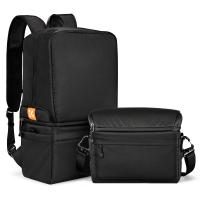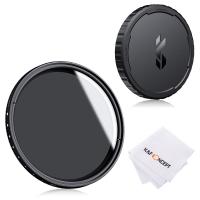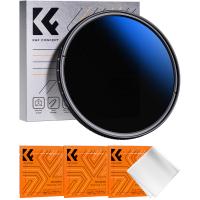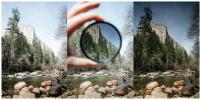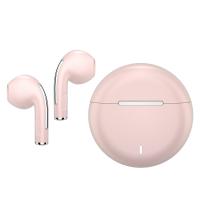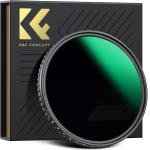
77mm Variable ND8-ND128 (3-7 Stop) Filter - NO “X” Spot, 28-Layer Nano Coating Neutral Density Filter
SKU: KF01.1079
Q
Does the polarizer have different levels of polarization when you turn it, like a variable nd for example. Or does it 'just polarize?'
Answer Question
A
It is a "polarizing" filter, so yes, it "just polarizes." That is it's only job really. :) Looking into your question as a whole, to do its job to "just polarize" correctly, yes the visual effect will change as you rotate it. The amount of change will vary with different situations. Many years ago when I was learning "the basics" of filters, the most common use of a polarizing filter was to darken blue skies and to reduce or eliminate reflections in a flat glass surface, like a store window. To do either of these to the maximum effect you need to be thinking like "part of a triangle". If you are trying to darken blue sky, the filter will have different levels of effectiveness depending on where you are pointing your camera in relation to the sun. Here is the method I learned. Turn your hand into a "gun" with your first finger pointing straight ahead with your thumb basically pointing 90 degrees to the side. Using your gun hand, point your finger at the sun. Wherever your thumb is pointed or can point if you were to rotate your wrist right or left are the areas of the sky that will darken the most with the polarizing filter.
To reduce or eliminate "window glare" the best angle to stand looking at the glass is approx. 37 degrees. This means that the polarizing filter will not reduce the reflection if you are shooting straight into the window. You have to turn and shoot at an angle. All of this means that the polarizer is not a silver bullet. It will not work at all in some situations, and will be more effective or less effective in situations described above.
Top Bestselling Products
C$53.99 C$47.99
C$44.99 C$40.99
C$60.99 C$40.99
C$47.99 C$41.99
Related Articles

